Every year, the Botanical Society of South Africa sponsors Cape Peninsula University of Technology (CPUT) students on a camp. In return, students need to search through the Botanical Society’s quarterly journal, the Veld and Flora, and present an article to a group of like-minded people, in their third year. The botanical society are a non-profit, civil society that curates South Africa’s floral heritage and believe in preservation and education as the main drivers in protecting indigenous vegetation.
By joining the society, you receive benefits like discounts from the book shop, free access to any botanical garden in the country and a quarterly journal jam-packed with articles on South African flora. It was from one of these journals that I chose an article on the written history of herbal medicine which started with Pedanios Dioskurides and his collection of herbal remedies.
Dioskurides was a Doctor in the roman empire and traveled all over Europe at the time of Roman occupation, gathering household recipes for medicinal ailments. His collection, de Materia Medica, was published in 77AD and became the most authoritative reference of medicinal treatment for the next 1500 years. So popular was his work, that it was reprised as gifts for royalty and wealthy patrons with elaborate drawings and descriptions that became simpler with every copy, until just the name of the plant remained.
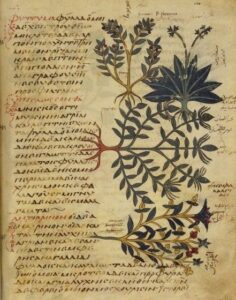
South African flora is diverse, with many medicinal remedies used by the Khoi and San before colonisation. There is little published research regarding medicinal plant usage in the Great Karoo, which echoes the established abandonment of the indigenous expertise carried by descendants of the San and Khoi people who lived in this area for thousands of years. The following examples can be found today in most farmlands in the Eastern Cape:
Mentha longifolia (Longleaf mint, Balderja) ward off mosquitoes or to help heal wounds,fevers, headaches, indigestion, menstrual pains and colic.
Ballota africana (Cat herb, Kattekruie) treats fevers and measles, coughs, colds, influenza, bronchitis, sore throats, insomnia, bladder and kidney infections.
Melianthus comosus (Kruidjie-roer-my-niet) leaves are toxic and only external use is advised. Leaf poultices are applied to alleviate aching backs, wounds, bruises and rheumatism.

Chrysocoma ciliata (Bitterbos, Bitterkaroo) used to wash sores, wounds and syphilis. It is also said that this decoction helps to alleviate rheumatism, constipation and gastric fever.
Artemisia afra (Wild Wormwood; Wilde-als) used as a treatment for fevers, colds and chest problems. Nasal congestion and headaches is said to be alleviated successfully by placing rolled-up leaves into the nostrils or by inhaling the dried powdered form of the leaves.
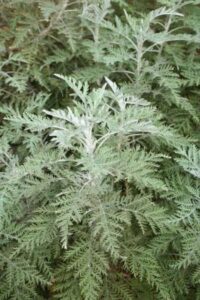
Pentzia incana (Anchor Karoo Bush, Ankerkaroo) alleviate constipation and stomach aches. The young stems are chewed to ease toothache.
Eriocephalus ericoides (Kapokbos, Wilde Roosmaryn) Kapokbos used as a repellent for fleas and lice, used to stuff pillows and duvets. It is also a known treatment for kidney and bladder disorders
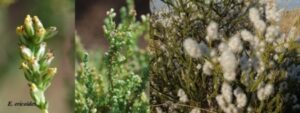
Boophone disticha (Tumbleweed, Candelabra flower, Bushman Poison Bulb, Gifbol) bulbs contain neurotoxins and many deaths have been recorded from its use. The Khoisan applied it to arrows for hunting. The bulb has sedative properties and people of the Karoo often placed the scales of the bulb in their pillows to treat insomnia. Doses of the bulb cause hallucinations and was used in initiation rites and for divination in certain African tribes. The dry scales of the bulb are applied externally to wounds, burns and various skin conditions to aid healing and to ease The pain. A weak decoction of the bulb is used as a pain killer to alleviate headaches, abdominal pains and chest pains.
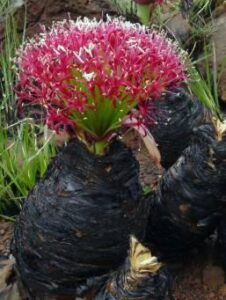
Aloe ferox (Cape Aloe, Bitter-aalwyn) Colonists were taught by the Khoi that the sap of the leaves can be used as a wound dressing. The leaf juice is used to treat burns and to rid dogs and cattle of internal and external parasites. The juice of the leaves is a strong laxative for both humans and animals.

Portulacaria afra (Spekboom) This is a versatile plant and is used in a variety of ways ranging from cooking to medicinal remedies. The leaves add a delightful taste to salads and stews. These leaves are also sucked to treat over-exhaustion. It is also believed that chewing the leaves promotes the flow of breast milk. Leaf poultices are applied to blisters, corns, acne, insect bites, sunburn and aching feet. High blood sugar levels are apparently effectively treated by chewing the leaves several times a day.
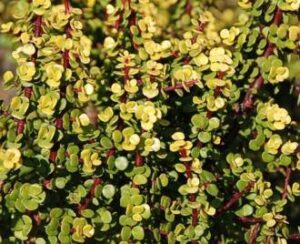
To find out more, visit your nearest book store and pick up a copy of Antoinette Pienaar’s, Griquas Apprentice/ Kruidjie-roer-my or the Briza publication: Medicinal herbs of South Africa.








